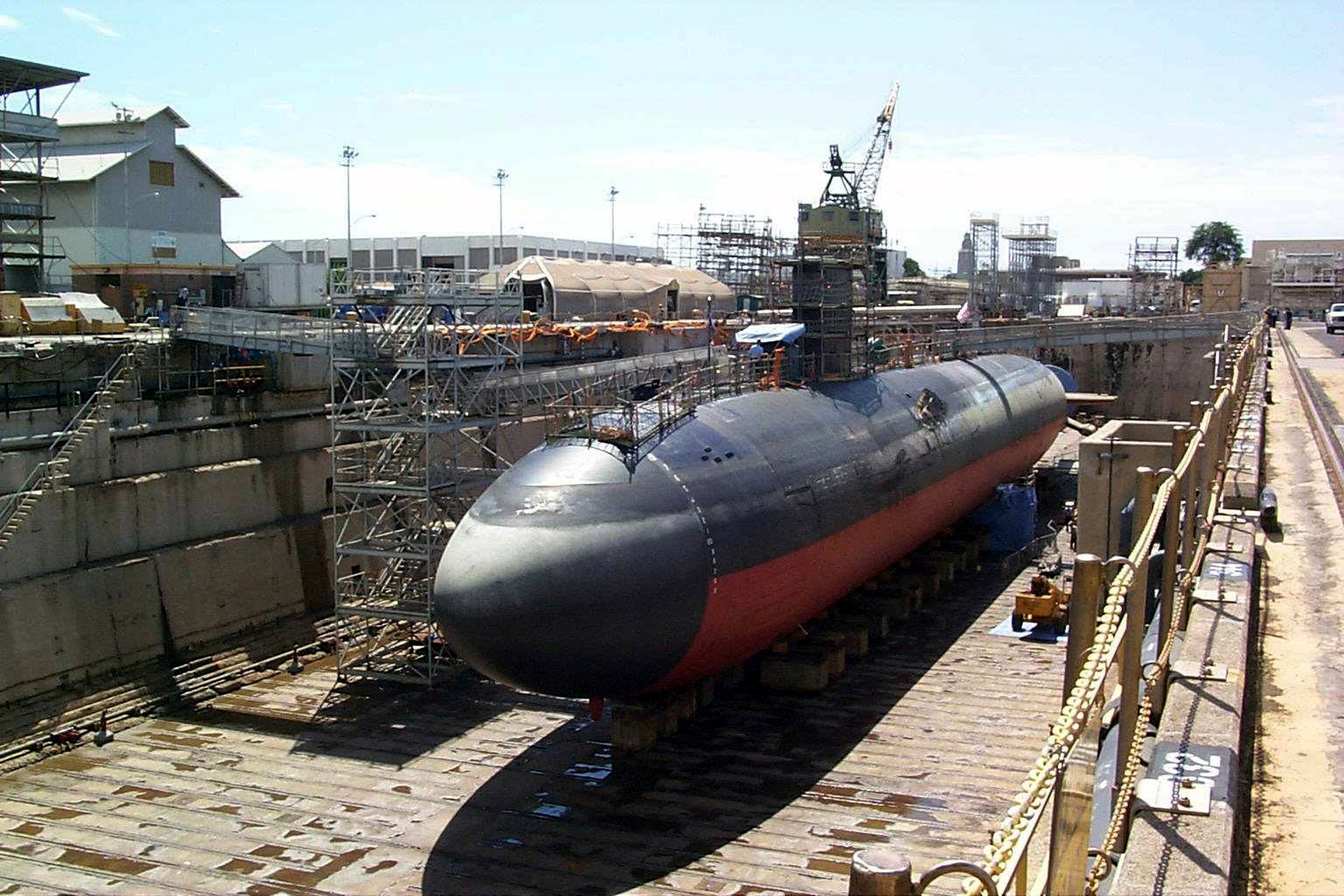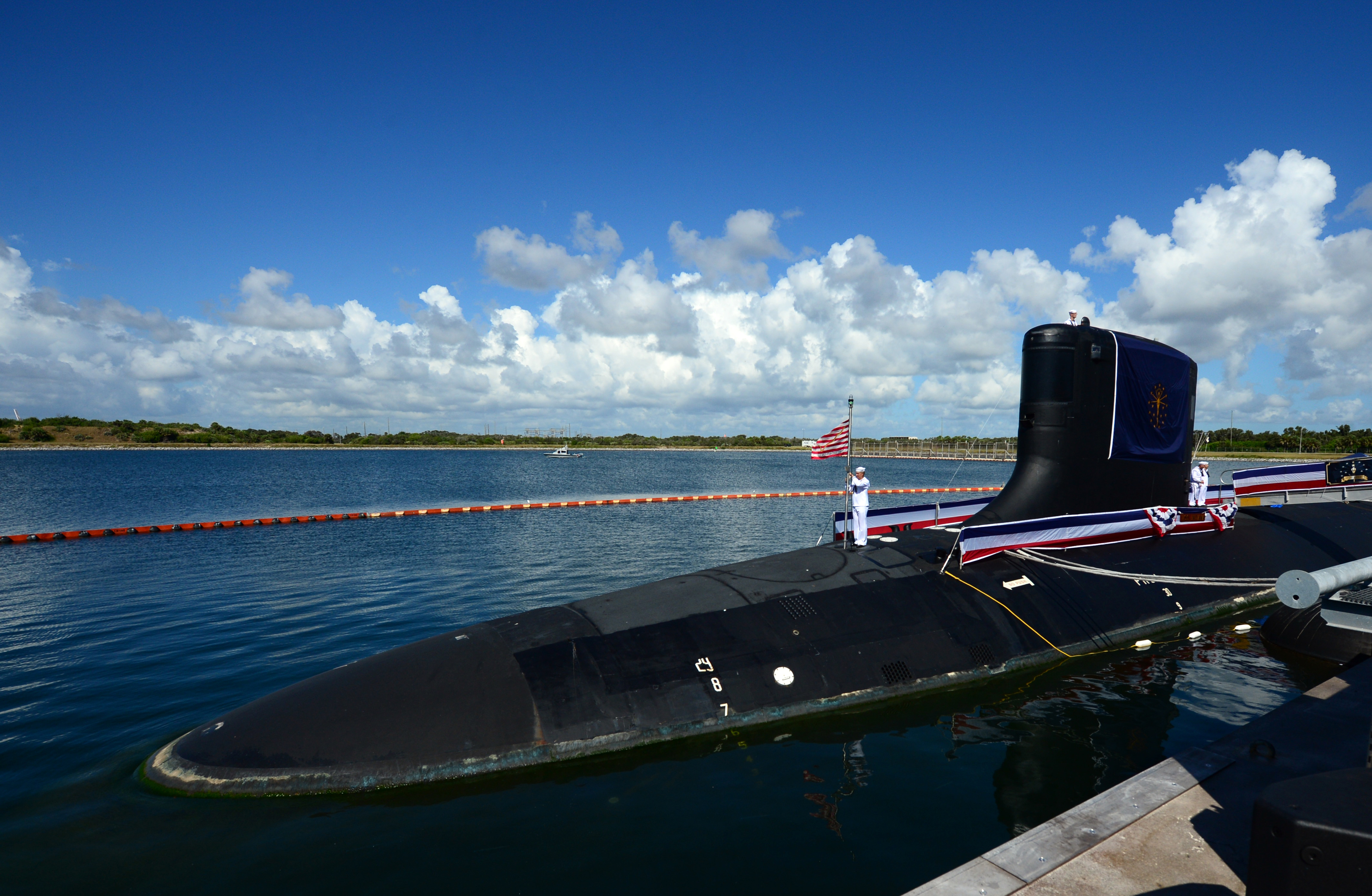
As the Navy grapples with current backlogs of work at public maintenance yards and finalizes its longer-term plans for fleet maintenance, some lawmakers are pushing the Navy to send more attack submarine maintenance work to private shipbuilders.
In last week’s Senate Armed Services Committee hearing on Navy readiness, Sen. Blumenthal (D-Conn.) noted that the Navy had already sent four attack subs to either General Dynamics Electric Boat in his home state or to Newport News Shipbuilding in Virginia, and that the sea service was readying to award two more to the private yards soon.
But, he said, “based on maintenance requirements, the Navy should consider transferring more than the two additional attack submarines to address readiness, in my view, challenges that are simply growing.”
Blumenthal’s concern is two-fold. First, the senator says the Connecticut yard has 5 million man-hours of available labor between now and Fiscal Year 2024 that could be filled with repair work. There have been concerns about properly timing the hiring of new employees with the actual start of Columbia-class ballistic missile submarine work – the reason the workforce is growing in the first place – and that the yard may actually shrink its workforce now ahead of having to grow it again once the Columbia program reaches serial production. Using the workforce for maintenance work could help address some of that concern. Second, the senator cited a Government Accountability Office report that shows ongoing backlogs at the four public maintenance yards are actually getting worse, not better.
“There is a clear solution to address the maintenance backlog, ensure drydock availability at public shipyards, and mitigate impending workforce decline prior to production for Columbia Class submarines. The Navy should transfer submarines awaiting maintenance from the public yards to the private yards as a short-term solution to prevent deployment delays,” Blumenthal wrote in a Dec. 11 letter to Navy Secretary Richard V. Spencer, according to a copy obtained by USNI News.
Currently, three attack submarines have been awaiting maintenance for so long that they lost their dive certification: USS Boise (SSN-764), USS San Juan (SSN-751) and USS Charlotte (SSN-766), according to Naval Sea Systems Command spokesman Bill Couch. Boise is headed to Newport News Shipbuilding for its maintenance availability as soon as next month, but San Juan and Charlotte are going for public yard availabilities at Portsmouth Naval Shipyard and Pearl Harbor Naval Shipyard and Intermediate Maintenance Facility, respectively.
“The Navy reviews windows of availability for submarines requiring maintenance and upgrades and compares them to workload capacity at naval shipyards. If the Navy determines that naval shipyards are not likely to have sufficient capacity during the time identified, it considers the cost/benefit of contracting the availability to a private shipyard,” Couch said on the decision to send two of the three longest-waiting submarines to the public yards.
“In the cases of USS San Juan and USS Charlotte, the Navy determined that Portsmouth Naval Shipyard and Pearl Harbor Naval Shipyard and Intermediate Maintenance Facility, respectively, had sufficient capacity to perform the planned work.”
Still, due to the ongoing backlogs, “NAVSEA will continue assessing the public/private industrial base as it assesses workload requirements and seeks to mitigate workload peaks within any given year. The Navy is planning for two upcoming availabilities for the private shipyards, and is currently formulating acquisition strategies for both availabilities,” he said.
Despite Blumenthal’s call for even more work to go to the private yards, Spencer said at last week’s hearing that he had some reservations. The Navy has maintained that sending the work to private yards is more expensive, though the GAO found the opposite in a report that used a different accounting style to capture overhead costs than the Navy uses. And the availabilities at the private yards are running behind schedule due to workers learning how to plan and execute maintenance availabilities, which is similar but not the same as building a new submarine.
“There is not a 100-percent correlation between building skills and maintenance skills, they don’t overlap 100 percent. We’re learning that right now. [Workers at Electric Boat and Newport News Shipbuilding are] farther up the curve than starting from zero for sure, but repair is a different exercise than build, so we’re on a learning curve. And all we’re hoping for … is that as partners working together we can get a price point that is agreeable,” Spencer said.

Blumenthal is not the only lawmaker who has advocated sending more work to the private yards. Rep. Joe Courtney (D-Conn.), whose district includes the Groton-based Electric Boat yard, has also argued that doing so would spare Electric Boat from workforce fluctuations between now and the start of Columbia-class work as well as easing the pressure on the public yards.
When the Navy announced it would send new submarine USS Indiana (SSN-789) to Electric Boat for its post-shakedown availability, Courtney said in a statement that “the Navy is responding to the reality that our private shipyards must be a partner in addressing the shortfalls in submarine repair and maintenance needs. This has been the focus of my subcommittee over the last two years. One of the key moments leading to this decision was when I accompanied the Secretary of the Navy Richard Spencer on his first trip to Groton on February 15, 2018. There he was briefed regarding a potential dip in work this fall that made the need to assign repair work to Electric Boat an urgent priority. … This decision is hopefully the start of a new trend by the Navy to utilize private shipyards to shorten the gaps in repairs of the attack submarine fleet.”
Electric Boat did not provide a comment to USNI News.
Newport News Shipbuilding President Jennifer Boykin had previously told USNI News that the Virginia yard was making capital improvements to support conducting more submarine maintenance work there, including upgrading piers, docks and utilities.
Following last week’s Senate hearing, Bill Smith, Newport News Shipbuilding’s vice president of fleet support programs, told USNI News that “as we continue grow this product line, we will continue to look for opportunities to pursue more submarine repair work in addition to the three availabilities (USS Columbus, USS Helena and USS Boise) we are in the process of executing at our shipyard.”
The Navy will soon release a five-year plan on submarine maintenance, and in the spring it will release a 30-year ship maintenance plan that outlines how the service will keep its growing fleet ready to operate as it expands towards a goal of 355 ships.





